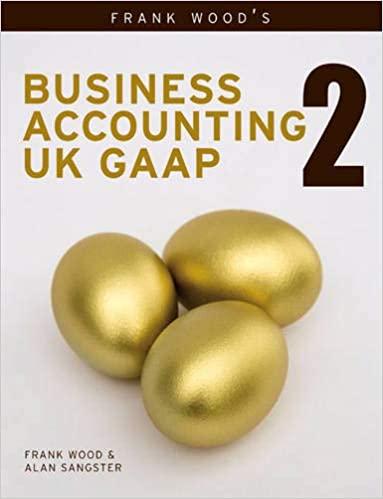Answered step by step
Verified Expert Solution
Question
1 Approved Answer
1. The journal entry to record a credit card sale using a nonbank credit card (for example, Canadian Tire or Sears) includes a debit to
 1. The journal entry to record a credit card sale using a nonbank credit card (for example, Canadian Tire or Sears) includes a debit to the (a) Cash account (b) Accounts Receivable account. (c) Bank Charges Expense account. (d) Sales account 2. The account Allowance for Doubtful Accounts is necessary because (a) when recording bad debts expense, it is not possible to know which specific accounts will not be paid. (b) uncollectible accounts that are written off must be accumulated in a separate account. (c) a liability results when a credit sale is made. (d) management needs to accumulate all the credit losses over the years. 3. The account Allowance for Doubtful Accounts is classified as an) (a) liability (b) contra account to Bad Debts Expense. (e) expense (d) contra account to Accounts Receivable. 4. Under the allowance method for uncollectible accounts, Bad Debts Expense is recorded (a) when an individual account is written off. (b) when the amount of loss is known (c) for an amount that the company estimates it will not collect. (d) several times during the accounting period. 5. Interest is usually associated with (a) accounts receivable. (b) notes receivable. (c) doubtful accounts. (d) bad debts 6. Interest accrued on a note receivable is (a) credited to Notes Receivable. (b) debited to Interest Revenue. (c) credited to Interest Receivable. (d) debited to Interest Receivable 7. Depreciation is a process of (a) determining the asset's fair value. (b) asset valuation. (c) cost allocation. (d) determining the asset's residual value. 8. The cost of a depreciable long-lived asset is expensed (a) when it is paid for. (b) as the asset benefits the company. (c) in the period in which it is acquired. (d) in the period in which it is disposed of. 9. The carrying amount of an asset is equal to the (a) asset's fair value less its original cost. (b) "blue-book" amount relied on by secondary markets. (c) replacement cost of the asset. (d) asset's cost less accumulated depreciation
1. The journal entry to record a credit card sale using a nonbank credit card (for example, Canadian Tire or Sears) includes a debit to the (a) Cash account (b) Accounts Receivable account. (c) Bank Charges Expense account. (d) Sales account 2. The account Allowance for Doubtful Accounts is necessary because (a) when recording bad debts expense, it is not possible to know which specific accounts will not be paid. (b) uncollectible accounts that are written off must be accumulated in a separate account. (c) a liability results when a credit sale is made. (d) management needs to accumulate all the credit losses over the years. 3. The account Allowance for Doubtful Accounts is classified as an) (a) liability (b) contra account to Bad Debts Expense. (e) expense (d) contra account to Accounts Receivable. 4. Under the allowance method for uncollectible accounts, Bad Debts Expense is recorded (a) when an individual account is written off. (b) when the amount of loss is known (c) for an amount that the company estimates it will not collect. (d) several times during the accounting period. 5. Interest is usually associated with (a) accounts receivable. (b) notes receivable. (c) doubtful accounts. (d) bad debts 6. Interest accrued on a note receivable is (a) credited to Notes Receivable. (b) debited to Interest Revenue. (c) credited to Interest Receivable. (d) debited to Interest Receivable 7. Depreciation is a process of (a) determining the asset's fair value. (b) asset valuation. (c) cost allocation. (d) determining the asset's residual value. 8. The cost of a depreciable long-lived asset is expensed (a) when it is paid for. (b) as the asset benefits the company. (c) in the period in which it is acquired. (d) in the period in which it is disposed of. 9. The carrying amount of an asset is equal to the (a) asset's fair value less its original cost. (b) "blue-book" amount relied on by secondary markets. (c) replacement cost of the asset. (d) asset's cost less accumulated depreciation

Step by Step Solution
There are 3 Steps involved in it
Step: 1

Get Instant Access to Expert-Tailored Solutions
See step-by-step solutions with expert insights and AI powered tools for academic success
Step: 2

Step: 3

Ace Your Homework with AI
Get the answers you need in no time with our AI-driven, step-by-step assistance
Get Started


